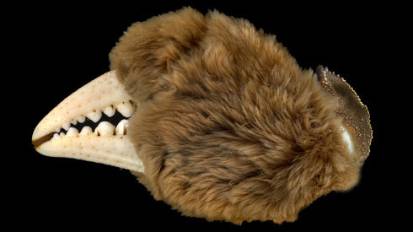A Chinese mitten crab has been recorded in Scotland for the first time, posing a potential threat to local biodiversity and habitats.
The invasive crab species is already known to have populated rivers in the UK as far north as the Tyne, but this sighting in Glasgow's River Clyde confirms its migration over the Scottish border.
The Chinese mitten crab, named for the furry mats covering its claws, is one of the top 100 worst alien species in the world, according to the International Union for Conservation of Nature. It threatens biodiversity by competing for food, preying on native species and causing severe structural damage to riverbanks through burrowing.
Crabs on tour
The specimen found in the River Clyde, the remains of a female mitten crab, is the first recorded sighting north of the border.
The Chinese mitten crab (Eriocheir sinensis), is native to East Asia but is now found across NE Europe and the USA. It was first recorded in the River Thames in 1935, probably introduced by shipping. In the late 1980s the mitten crab began to disperse westwards along the Thames, and there are now well-established populations of E. sinensis in a number of Welsh and English rivers, as well as a single sighting in Ireland in 2006.
The left claw of a male mitten crab (Eriocheir sinensis).
The International Maritime Organisation (IMO) has set out standards for the control and management of ships’ ballast water and sediments, in an effort to control the transport of species to non-native waters.
Potential threat to biodiversity
Mitten crabs may target the eggs of salmon and trout, according to recent research by Royal Holloway University of London (RHUL) student Jessica Webster and supervisors Dr Paul Clark (the Museum) and Dr David Morritt (RHUL).
Dr Clark sees the recent discovery as a major threat:
"An established River Clyde Chinese mitten crab population could pose an enormous environmental risk to the salmon and trout in this catchment (…) if this reported Clyde specimen came from a deliberate human release, the environmental authorities need to urgently consider what appropriate actions are required to prevent such introductions happening again in the future."
Dr Clark is studying the biology and behaviour of mitten crabs to better understand how we might control their migration and ultimately eradicate alien populations outside East Asia.
See live mitten crabs at Science Uncovered
As part of the Museum's annual festival of science on 26 September 2014, Dr Paul Clark and Dr David Morritt will be showcasing some live Chinese mitten crabs and talking about their work on the biology and behaviour of this problem species.
Come along to Science Uncovered to see these and a whole host of other specimens, take part in activities and meet Museum scientists.





